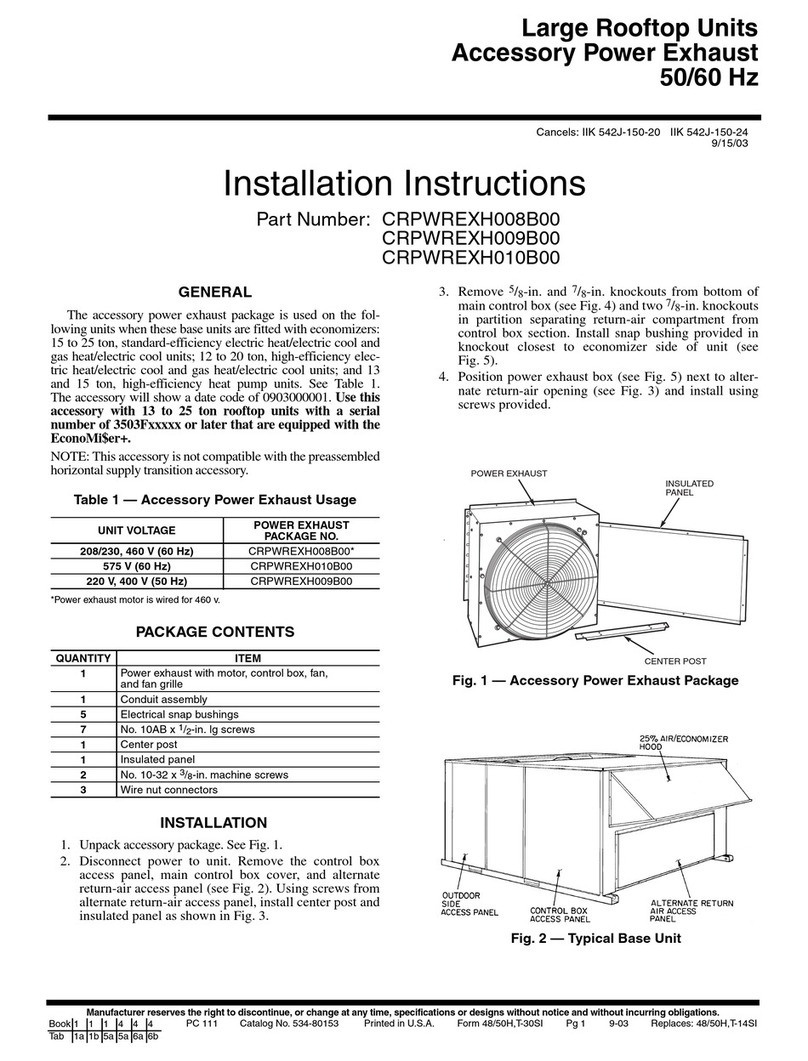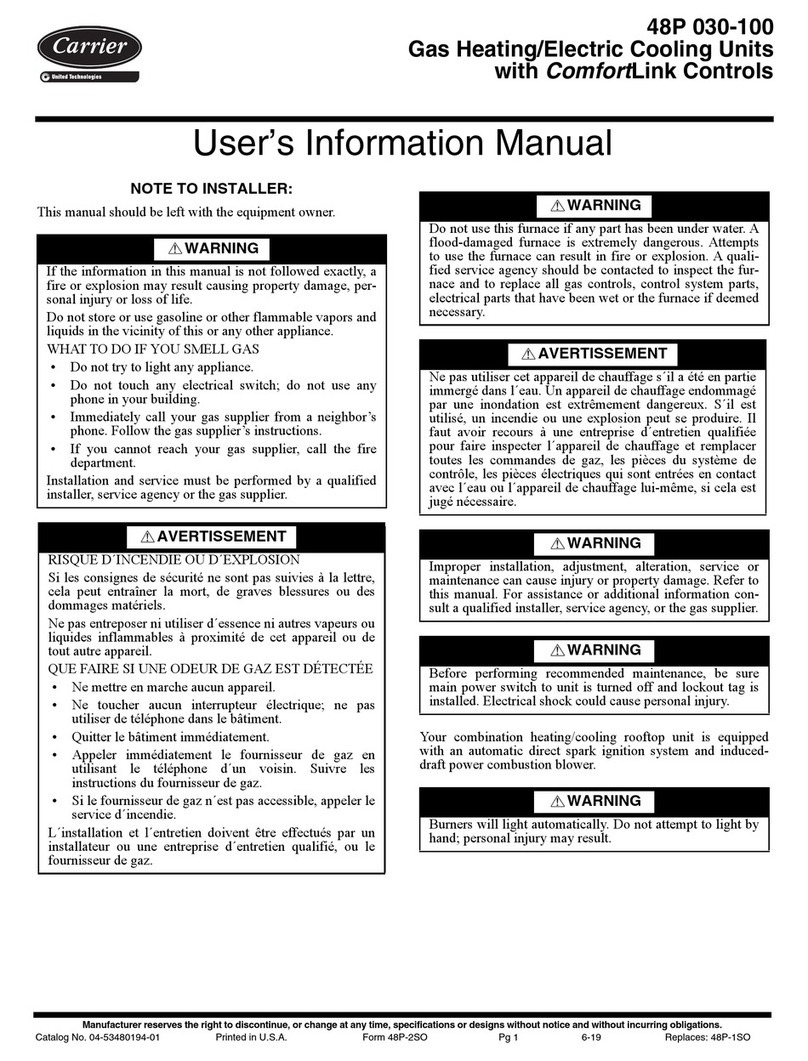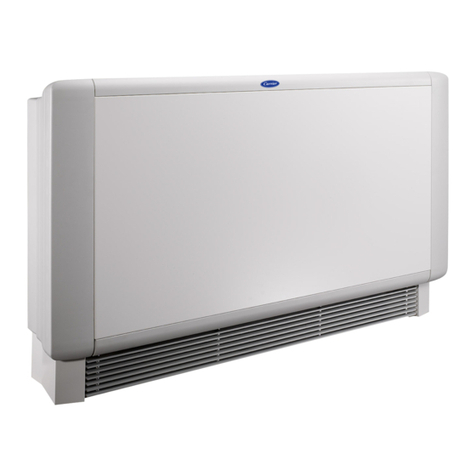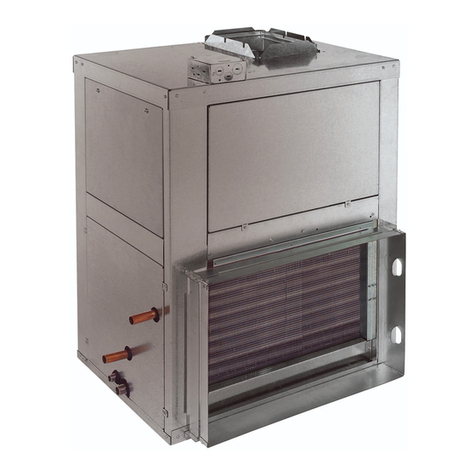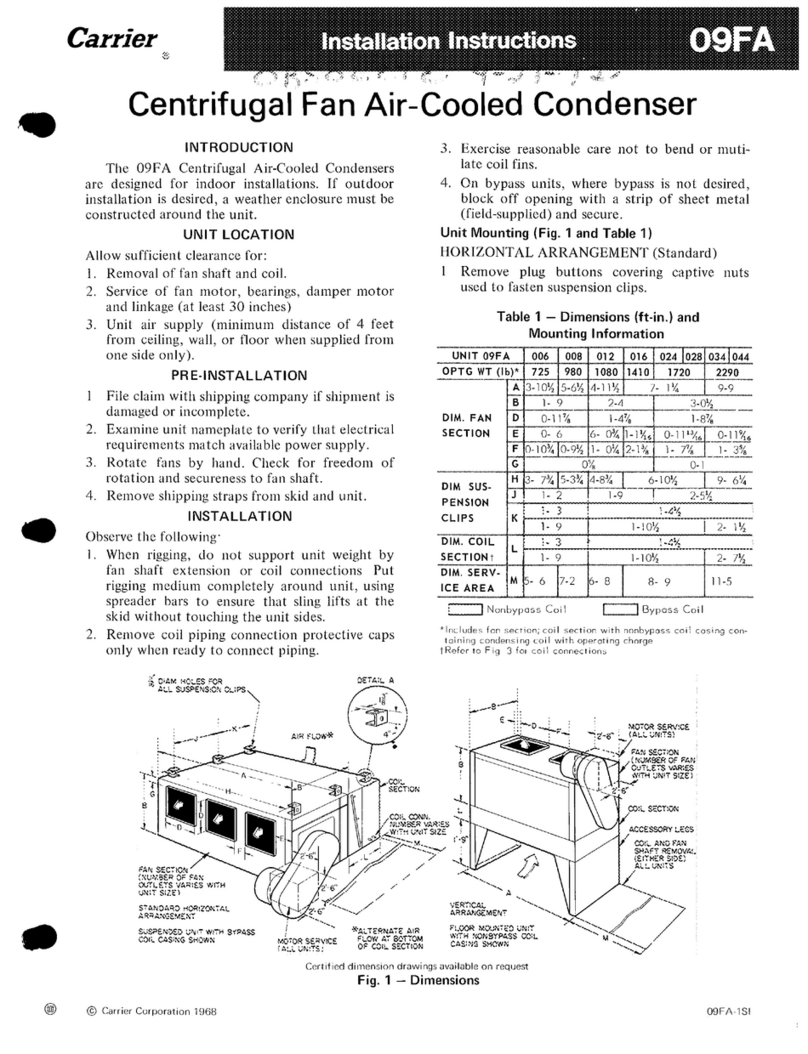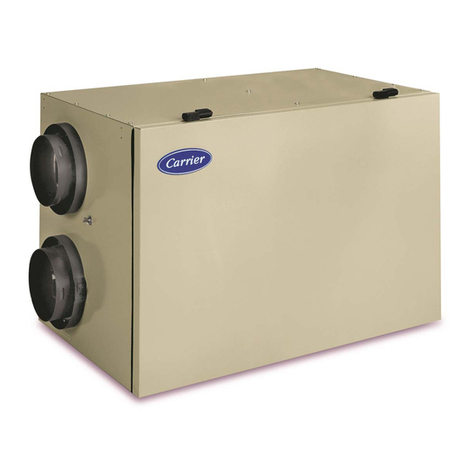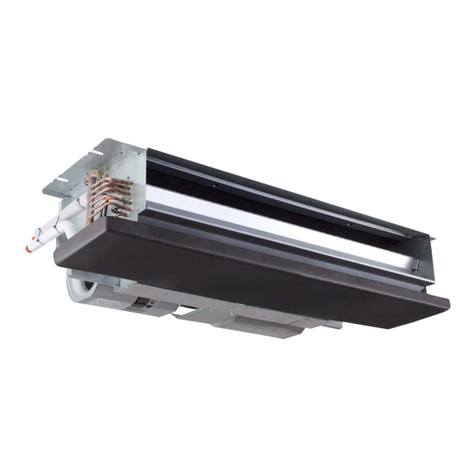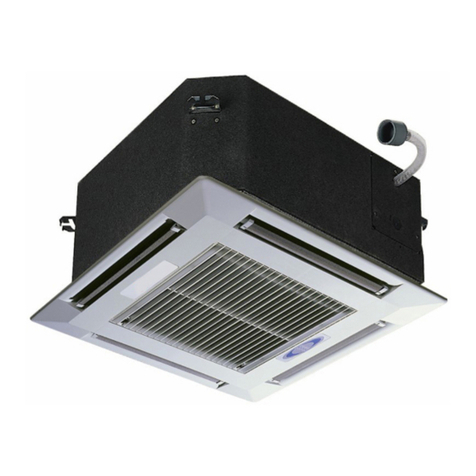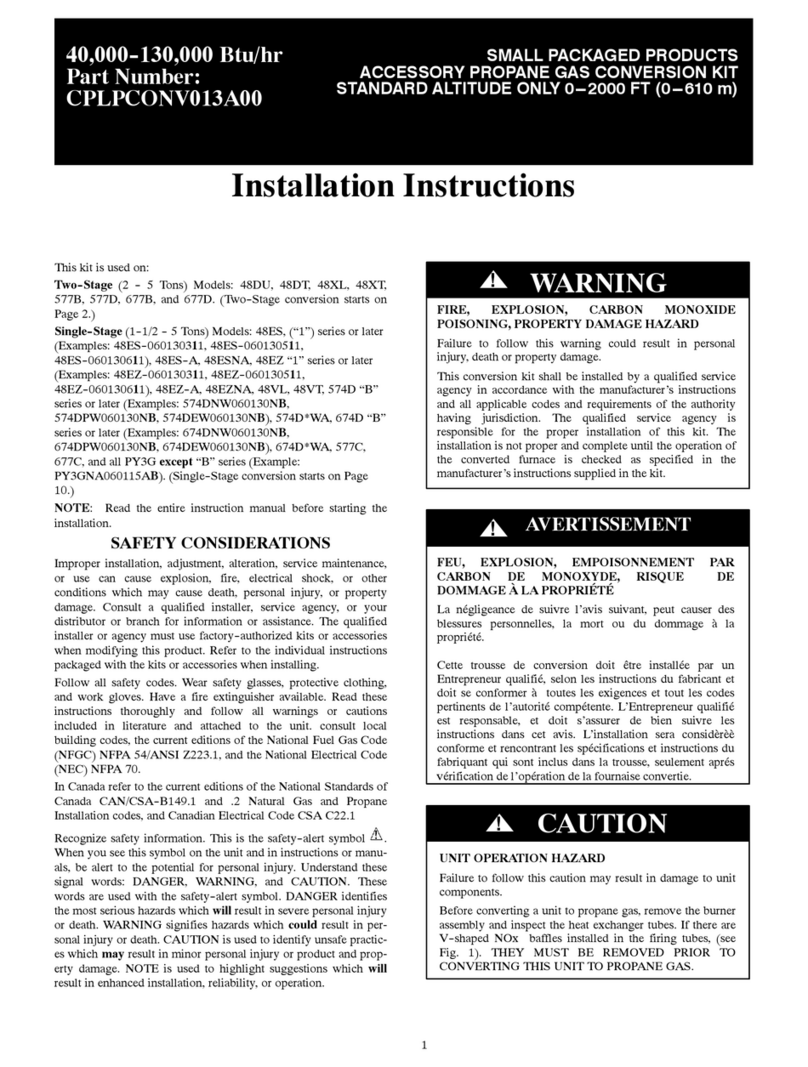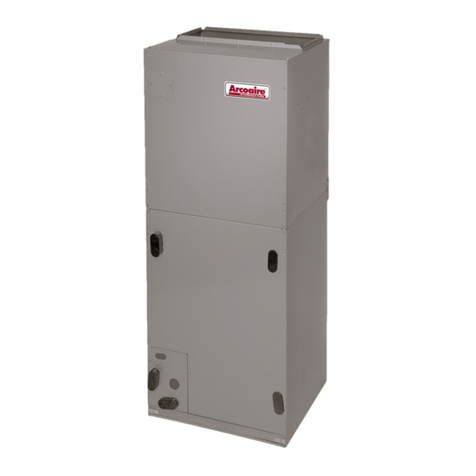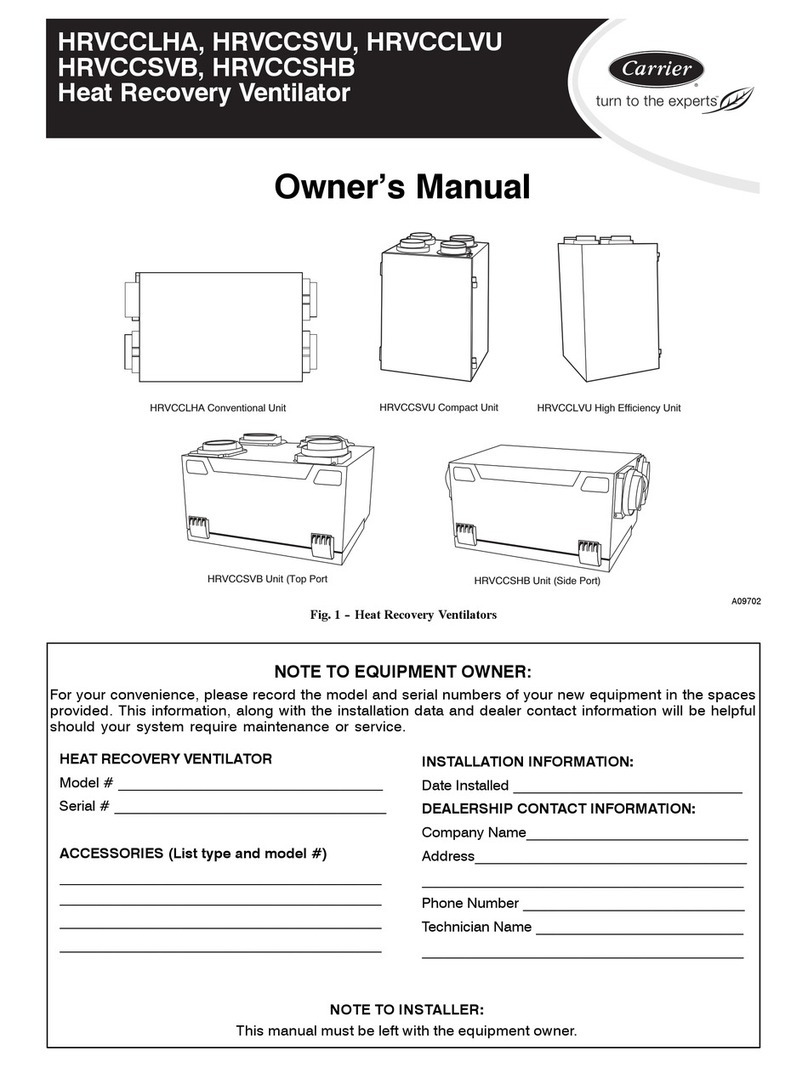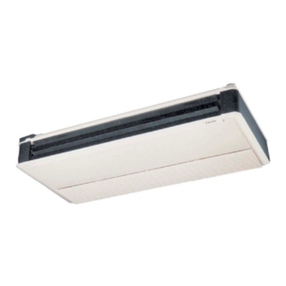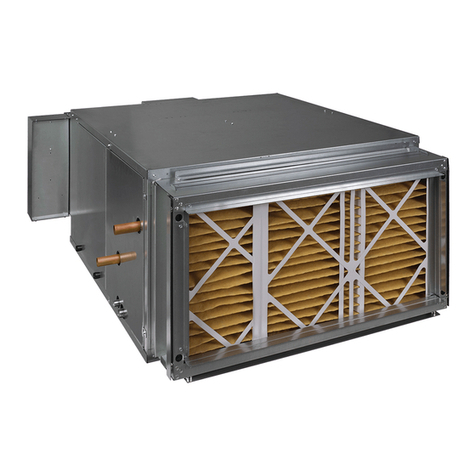
4
A12287
Fig. 7 - Chain Spring Installation
Independent System Application
In the absence of a forced- air system and a typical duct system
layout, the HRV can be applied as an independent or stand alone
unit. To ensure comfort, this type of application involves running
both fresh- air and return- air registers (or stale- air pickup registers)
throughout the home.
CARBON MONOXIDE POISONING HAZARD
Failure to follow this warning could result in personal injury
or death.
Do not install return- air registers (or stale- air pickup
registers) in same room as gas furnace or water heater.
!WARNING
Fresh-air registers are normally located in bedrooms, dining room,
living room, and basement. It is recommended that registers be
placed 6 to 12 in. (152 to 305 mm) from the ceiling on an interior
wall and airflow directed toward ceiling. If registers are floor
installed, airflow should be directed toward the wall.
Return- air (or stale- air pickup registers) are normally located to
draw from kitchen, bathroom, basement, or other rooms where
stale- air can exist.
Proper size and type of registers must be used to minimize pressure
drop. The velocity of airflow through register should not be above
400 ft/minute.
Calculating the Duct Size
Use the table below to ensure that the ducts you intend to
install will be carrying air flows at or under the recommended
values. Avoid installing ducts that will have to carry air flows
near the maximum values and never install a duct if its air flow
exceeds the maximum value.
Example of Calculation
PROBLEM: My installation requires two exhaust registers (one
for the kitchen, one for the bathroom). I will connect these registers
to a main duct which will connect to the unit (high speed
performance value of 140 cfm). What size of duct should I use for
the main exhaust duct and for the two end branches leading to the
registers? See Fig. 8.
END
BRANCHES
5˝ø
70 CFM
MAIN BRANCH
6˝ø 140 CFM
A12288
Fig. 8 - Main and End Branches
SOLUTION: Simplified method. (For a more detailed method of
calculating duct size refer to the ASHRAE or HRAI
HANDBOOK).
Main duct: Table above indicates a 6-in duct: Recommended air
flow: 120 cfm; maximum air flow: 180 cfm. The high speed air
flow of 140 cfm is close enough to the recommended value (120)
and far enough away from the maximum value (180). Therefore a
6-in duct or larger is an appropriate choice for the main exhaust
duct.
End branches: Each end branch will have to transport an air flow
of 70 cfm (140 divided by 2). Table above indicates a 5- in duct:
Recommended air flow: 75 cfm; maximum air flow: 110 cfm. The
high speed air flow of 70 cfm is close enough to the recommended
value (75) and far enough away from the maximum value (110).
Therefore a 5-in duct or larger is an appropriate choice for the 2
end branches.
NOTE:A4-induct would have been too small because the
maximum acceptable value for a 4- in duct is 60 cfm.
DUCT
DIAMETER
RECOMMENDED
AIR FLOW
MAXIMUM
AIR FLOW
4- in (102 mm) 40 cfm 19 L/s 68 M3/H 60 cfm 28 L/s 102 M3/H
5- in (127 mm) 75 cfm 35 L/s 127 M3/H 110 cfm 52 L/s 187 M3/H
6- in (152 mm) 120 cfm 57 L/s 204 M3/H 180 cfm 85 L/s 306 M3/H
7- in (178 mm) 185 cfm 87 L/s 314 M3/H 270 cfm 127 L/s 459 M3/H
8- in (203 mm) 260 cfm 123 L/s 442 M3/H 380 cfm 179 L/s 645 M3/H
NOTE: Examples use imperial measures. The same calculation applies to metric measures.




